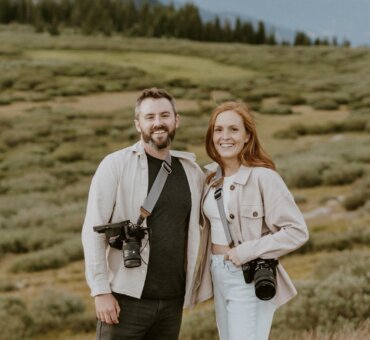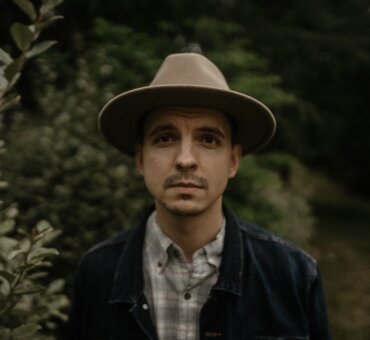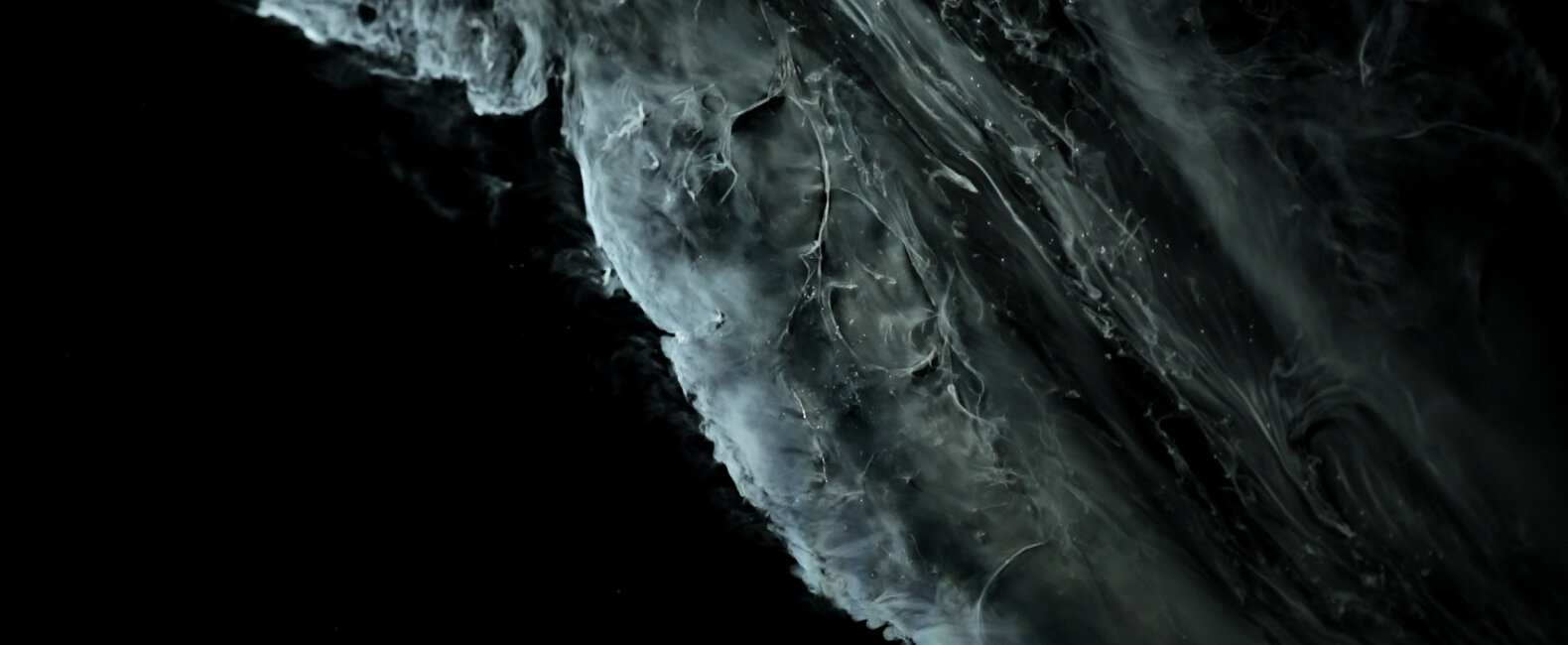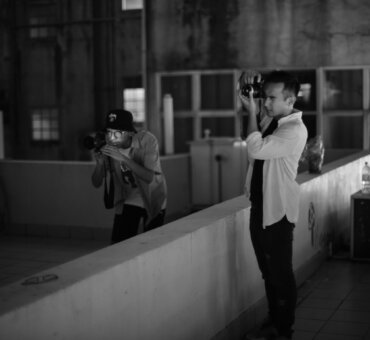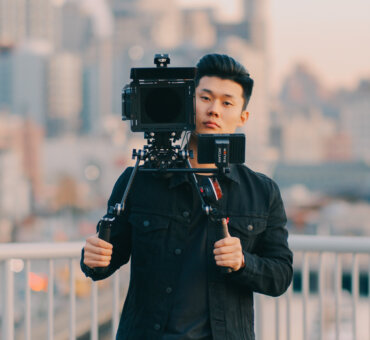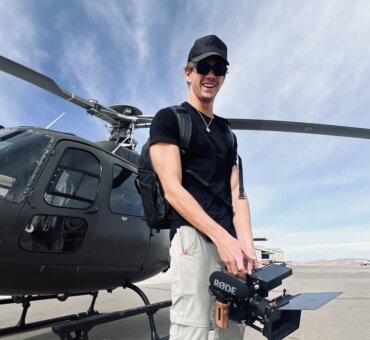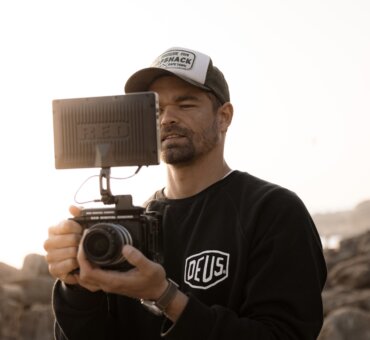Susi Sie does not like computers, so it’s a little bit ironic that our conversation took place over Skype. When we talked with her, she was sitting in her studio in Berlin, surrounded by the machines and materials she uses to make her kinetic, otherworldly, and yet entirely tangible films. Everything you see in a Susi Sie film is real. No computer trickery. No 3D. “I have a lot of sand,” she told us, “petri dishes, plastic cups, gloves, color, aquariums, tape, pipettes, cable ties, protective goggles, protection masks. It’s like a construction market, actually.”
Susi’s style and technique may be one of a kind, but her story is universal. It’s about curiosity, insecurity, experimentation, perseverance. It’s about finding the thing you’re truly good at. And while our apartments probably aren’t covered in oil and dust, we all know what it’s like to want to make a mess.
Here’s Susi.

I started studying video art in Maastricht, the Netherlands, which was great because we were free to experiment. The people there are very open-minded. After I finished my studies, I moved to Cologne, Germany, and found a job at a post-production agency. I worked there for six years, which is a long time, actually. I learned very, very much, and I also found my inner circle of close friends at that place. I am very thankful for that time. However, after six years I had the feeling I was kind of losing myself. I was working like a machine. Monday through Friday, nine to five. I just didn’t feel happy somehow. And to be honest, I didn’t have any self-esteem at that time. I’d forgotten what I was good at, and I was longing for something different; but I didn’t know what.
It wasn’t only about work. I felt I wasn’t living life to the fullest. I realized I didn’t have any goals or dreams in my life, and I was caught by my own fears of making any changes. Around that time, the 5D came out. I was quite broke, so I got credit from the bank and bought the camera. I started making experiments with a macro lens, shooting photos of flowers and things. But what I really wanted to do was make something that moved. I wanted to make a film. Back then I had a very small apartment… Sorry, I’m rambling. What was your question again?
My question was, “What’s your story?” This is great.
Usually I don´t speak so much, and now I’m just talking. But I had a very small apartment in Cologne. Just one room. I wanted to film something that moves, so I started making these experiments. I found oil in my kitchen and tried mixing it with water. That was my first film. Super simple, no budget. So I started thinking about moving liquids, moving structures, and I got deeper into that.
For me, it was very important to work with my hands. I had spent the last years in front of a computer, so it was important for me to find something I could touch and feel and maybe make a little bit of a mess. I didn’t have any plan. It was just for me. No client, no deadline. Just for myself.
I started finding different liquids, kinetic stuff, magnetic oils. It’s very fun to play with. But once it gets on your clothes and on your walls, you can’t get it off. So afterwards, everything was a big mess. But I think that’s just what I needed at that time. Soon I found a book about cymatics, the visualization of sound. Then I got totally into that because it’s all about analogue structures and analogue techniques.
When I finish a film, it looks as if everything was meant to be the way it is, but actually it’s always different than what I was planning.
Did you start experimenting with cymatics then?
Yes, I started to play with frequencies and their impact on different materials. But to be honest, in the beginning I had absolutely no idea what I was doing. I was just experimenting. I spent weeks with dust and powder in my apartment. Sometimes I was a bit dissatisfied when something didn’t work out the way I thought it would. But that’s part of the whole process. You go and search for other solutions. In the end, everything makes sense somehow. When I finish a film, it looks as if everything was meant to be the way it is, but actually it’s always different than what I was planning.
What type of work had you been doing at the production company?
I was mainly working as an editor, which has been a very big advantage for my films I am making now. I learned a lot about film in general — what makes a film good, what makes an edit good. I think it was very important that I spend those years in fixed employment, to learn the basics of the commercial world, to learn how to persevere, to deal with criticism. Now I’m mixing both worlds, my passion work with my client work.
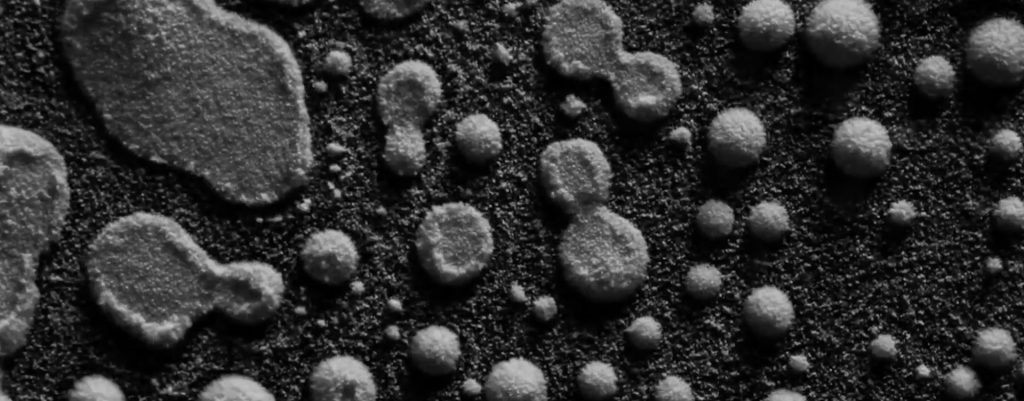
How did it feel to find work you loved doing?
As I said, I had absolutely no self-confidence at that time. I didn’t know what I was good at. And that’s a really bad feeling, when you don’t know what you’re good at. It gave me a lot of confidence when I realized there were people who were interested in what I was doing. I am super happy about that and thankful for the opportunity to do something I really love. That is a big privilege.
Is it hard to do this type of work for clients?
Combining my free work with the commercial world is quite challenging, but it’s also a gift that I can spend my work time on something I really like to do. It’s always an experiment. I cannot define a certain style in advance to determine what something will look like. I am limited to the reactions of the substances. So I have to make tests first and go through several steps with the client. Both sides definitely need patience for this process. It is always tricky to test some new techniques and styles, but I am always up for new things, always up for going one step further.
Why do you limit yourself to just what you can capture in-camera?
Now when I think about it, it sounds like a very clean, good concept to go straight for analogue techniques. But when I was first working on it, I wasn’t thinking about a concept at all. I was doing what I felt I needed to do. I just wanted to get off the computer and do something with my hands. This is what came out, so I kept on exploring different materials and substances. For me, I think it’s much more impressive when you see something that arises from itself, even if you could make the 100 percent exact same image using a computer. It’s the difference between documentary and fiction. You get a different feeling, I think.

You can put your focus on one very small thing and tell a whole story about it. If you look a bit closer, you experience something new.
Do you start with an idea in mind and then figure out how to create it, or do you just experiment and see what happens?
Both, actually. There are some films that I have a picture in mind and then I try to re-create it. But this never actually works. Many things that happen are coincidences or accidents. Something like, “Oh nooo, too much water! … Ah, that looks great!”
Do you have some sort of lab where you’re always trying new things?
I did most of my films in my apartment in Cologne. It was just one small room. My bed was also in that room, so I had to put plastic over everything before I could start working. And even then it was still a mess. I was experimenting with the finest powder that exists, so there was always dust all over everything.
Now I live in Berlin, and I have a separate working room, which is where I am right now. I have an office space as well, but I prefer making experiments here because they’re super dirty and sometimes very loud. I have a lot of sand, petri dishes, plastic cups, gloves, color, aquariums, tape, pipettes, cable ties, protective goggles, protection masks. It’s like a construction market, actually.
Do you keep pretty detailed notes?
Kind of. While I’m filming cymatic stuff, I am sometimes shouting at the camera: “4.049 HERTZ! 5.967 HERTZ!” to remember the exact frequency. I also write down notes to remember what worked and what didn’t.
I work in different steps. The first days of experimenting, I put the focus on the material and play with the substance to see how it reacts. When I have that under control, I go further and play with light. I see, ah, it could look cooler when it’s a bit more subtle, or whatever it may be. Then I play with the camera. Ah, maybe I can make different angles and stuff. Then I move on to perfecting everything in detail before I continue with the post production.
How long does it usually take you to make a film?
While I was working at my fixed employment, it took quite long for the whole production because I only had time after my job or on the weekends. Also, I couldn’t afford my own computer. So it took a long time. I don’t know, maybe half a year for one film. Now that I work as a freelancer, I have more time for my free projects. That’s what I do with my money. I don’t buy expensive clothes or a nice car. I buy free time to make experiments. I think it was really important for me to have those struggling times so I could really appreciate things now. But it’s not just about having time. It’s about focusing your mind. When you’re always switching your mind from here to there, you’re not getting deep into a project. You don’t have the same concentration and energy.
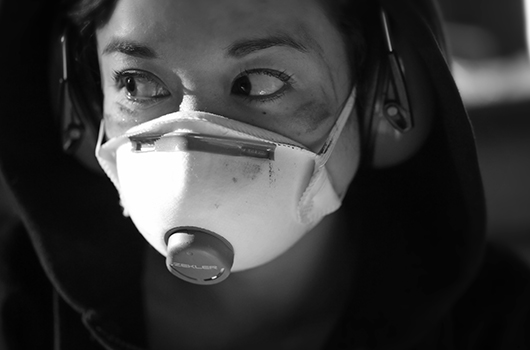
I should also mention how much I appreciate the opportunities I’ve had to work with some super creative and talented sound designers. People like John Black (CypherAudio), Clemens Haas, Nikolai von Sallwitz, and David Kamp. Fifty percent of what makes a film good is the audio. Every sound artist created something very special and unique. I am super thankful and happy about these collaborations, to have creative exchange and the possibility to share experiences.
What’s next, do you think?
There are so many things to explore. Some people ask me, “Aren’t you afraid you will run out of ideas one day?” Like there’s nothing more to explore. But actually, it’s endless. It’s like music. It’s endless. It can be just one small idea. It doesn’t have to be something big. You can put your focus on one very small thing and tell a whole story about it. If you look a bit closer, you experience something new. It’s endless.





































































